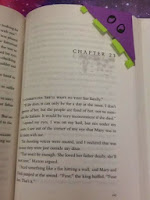For this post I was assigned to read
Teaching Can Be a Profession by Joel Klein. In this article I found three problems and three solutions:
Pick From The Best
Problem: Most people will get hired as an educator by just having a degree.
Solution: Recruit from the top rankings of graduates.
When it comes to creating a competitive job field for educators I agree. The more passionate future teachers are about getting a job, the more they will appreciate the opportunity. In my opinion, this will lead to more teachers who want to teach and should teach. Often you find teachers that seem to not care about being in the classroom, but just want an encome. Hopefully by making teaching into a harder job field to be in, we will be left with more teachers who care about education.
Seniority Distraction
Problem: Teachers with years of experience will always be chosen over beginner teachers, no matter the circumstances.
Solution: Professionalize teaching and treat all teachers as equals who earn their levels of achievement.
Seniority distraction is a very popular situation in the education system. I completely agree with treating teachers as equals and requiring teachers to earn their place. This is also a situation that will drive teachers to push harder to achieve success for themselves and in the classroom. I believe that teachers should not be judged by the amount of time they have spent teaching, but by the quality of their teaching.
Radical Change
Problem: Teachers are not treating their jobs as a profession.
Solution: "National Teacher Examination", one-three year(s) of internship for prospective teachers, teachers will provide and create their own standards, and promotions based on specialty exams.
The solution to radical change is not something I can completely agree with. I do believe that a "National Teacher Examination" and one-three year(s) internship would be very beneficial for future and current educators but I am not for certain in agreement with teachers creating their own standards. In this part of the article, Joel Klein had several interesting ideas for the school system. Radical was most certainly a good choice of wording. I do agree with the idea as a whole. Teachers should have to prove themselves and be able to live up to the standards they should accomplish as educators.
In conclusion, I believe that Joel Klein's idea of professionalizing education is something that must be done. Teachers should have standards that need to be met and checked for approval yearly or when deemed necessary. Teaching should be a profession that is based on hard work and qualification, not just a school degree. This article made me think about situations that I have not thought about before. This made me realize that if I agree with these solutions that I should live up to them. I should work harder for this degree I am seeking and achieve this degree because I earned it.








